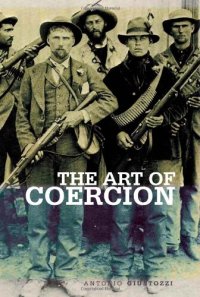
Ebook: The Art of Coercion: The Primitive Accumulation and Management of Coercive Power
Author: Antonio Giustozzi
- Series: Columbia/Hurst
- Year: 2011
- Publisher: Columbia University Press
- Language: English
- pdf
An expert on the Taliban's modern habits and practices, Antonio Giustozzi asserts a controversial point about the role of violence and coercion in state building, which also happens to be relevant to liberal interventionism. Liberal interventionism's dominant discourse dangerously neglects the role of coercion and the monopoly of violence in the countries it purports to aid. Many scholars assume that a functional liberal state can emerge from a settlement between warring parties, especially if the agreement is characterized by political inclusiveness and a social contract. Yet similar post--Cold War deals have exposed the fallacy of such logic.
Giustozzi contends that a key flaw lies in the confusion over the specifics of state formation and state building. In his view, completely different ''rules of the game'' apply in each scenario. Naked coercion is a key component of state formation, and very few states have been formed without recourse to it. In contrast, the history of state consolidation after initial formation reflects a taming of violence and a sophisticated method of managing it.
The Art of Coercion introduces a new framework for analyzing the role of security in its broadest sense, particularly its place in state formation and state building. While focusing largely on nineteenth- and twentieth-century examples, Giustozzi discusses instances of coercive power throughout history, ranging from its use in the Carolingian empire to South Africa's Boer War, and from China's Warring States period to Emiliano Zapata's Mexican Revolution. He scrutinizes the role of armies, guerilla bands, mercenaries, police forces, and intelligence services, exploring why some coups fail while others succeed and how the monopoly of violence decays over time.